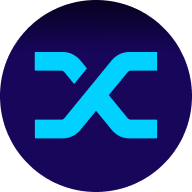На тлі проблем з масштабуванням мережі Ethereum та зростаючої перевантаженості, Synthetix стала інноваційним рішенням для вирішення цих проблем. Завдяки нативному токену SNX, Synthetix надає надійну платформу для синтетичних активів у сфері децентралізованих фінансів (DeFi). Ця платформа виходить за рамки типових пропозицій DeFi, представляючи особливий підхід до токенізації та управління активами, який відкриває численні можливості в криптовалютному просторі.
Що таке Synthetix?
Synthetix – це протокол DeFi, що працює в мережі Ethereum і дозволяє створювати синтетичні активи. Ці активи, які називаються Synths, відтворюють вартість різних інших активів, включаючи фіатні валюти, криптовалюти, товари та акції. Основна мета Synths – запропонувати користувачам доступ до цих активів без необхідності володіти ними фізично. Synthetix Network Token (SNX) є нативним токеном протоколу і використовується як застава для випуску Synths
Команда Synthetix
Команда Synthetix на чолі з Каїном Уорвіком – це група досвідчених розробників та підприємців. Серед відомих членів команди – Дастін Фонтейн, технічний директор; Джастін Мозес, старший інженер-програміст; Клінт Енніс, старший архітектор; і Санні Вемпаті, front-end архітектор. Крім того, команду доповнюють Ендрю Портер, невиконавчий директор, Марсело Д., партнер Cluster Capital, та Брайан О'Фаррелл, співзасновник Furthr.
Як працює Synthetix?
Synthetix працює, використовуючи децентралізовані оракули, які є протоколами визначення цін на основі смартконтрактів, для моніторингу цін на конкретні активи. Таким чином, вартість Synths прив'язується до базових активів, що дозволяє користувачам отримувати доступ до цих активів, не володіючи ними напряму.
Користувачі можуть заблокувати свої токени SNX як заставу для створення нових Synths. Цими токенами можна торгувати на біржі Synthetix без ризику прослизання. Це досягається за допомогою механізму, який спалює продані Synthy і карбує нові, забезпечуючи збалансованість загальної пропозиції.
Токеноміка SNX
Токени SNX відіграють життєво важливу роль в екосистемі Synthetix, оскільки вони слугують заставою для створення synths. Коли власники SNX здійснюють стейкінг своїх токенів в рамках протоколу, вони отримують доступ до винагород і можливість брати участь в обміні Synth. Варто зазначити, що вартість токенів SNX безпосередньо пов'язана з вартістю synths, які вони забезпечують, встановлюючи важливий зв'язок між токеном і базовими активами в системі.
Варіанти використання Synthetix
Synthetix пропонує різні варіанти використання синтетичних активів. Завдяки синтетичним активам користувачі можуть отримати доступ до широкого спектру активів без необхідності безпосередньо володіти ними, оскільки синтетичні активи прив'язані до вартості базових активів.
Платформа дозволяє користувачам торгувати синтетичними активами безпосередньо на Synthetix DEX без залучення посередників. Крім того, будучи побудованою на блокчейні Ethereum, користувачі можуть депонувати Synths на обраних DeFi-протоколах, забезпечуючи ліквідність і заробляючи відсотки.
Власники токенів SNX можуть ставити свої токени на кін і отримувати Synths в якості винагороди, що ще більше розширює їхню участь в екосистемі.
Розподіл SNX
Загальна пропозиція токенів SNX обмежена 259,562,746. Розподіл відбувається наступним чином:
- 60% через первинне розміщення монет (ICO).
- 3% на винагороди та маркетингові стимули.
- 5% на партнерства.
- 12% для фонду.
- 20% команді та консультантам.
Шлях, який чекає на Synthetix
Майбутній план розвитку Synthetix передбачає розширення пропозиції синтетичних активів, включно з традиційними активами, такими як акції та облігації. Цей стратегічний крок спрямований на подолання розриву між традиційною фінансовою сферою та простором блокчейну, що дозволить користувачам отримати доступ до ширшого спектру інвестиційних можливостей.
Крім того, команда Synthetix прагне поліпшити користувацький досвід, підвищуючи доступність і зручність платформи, орієнтуючись як на досвідчених, так і на нових користувачів.



















Соцмережі